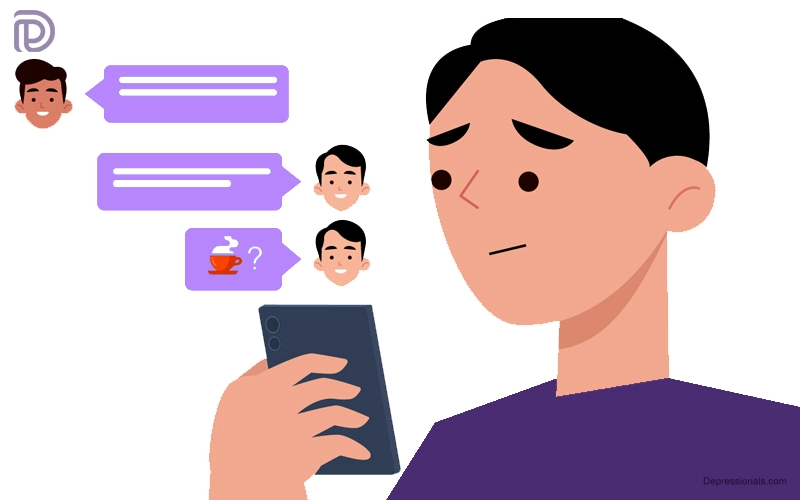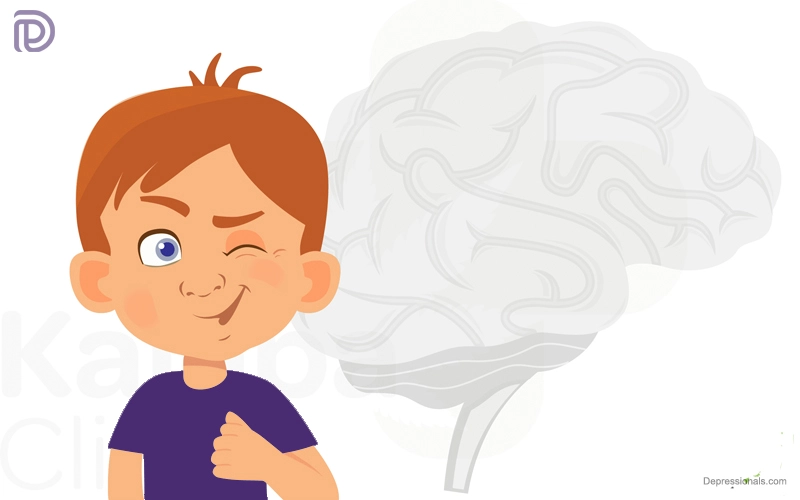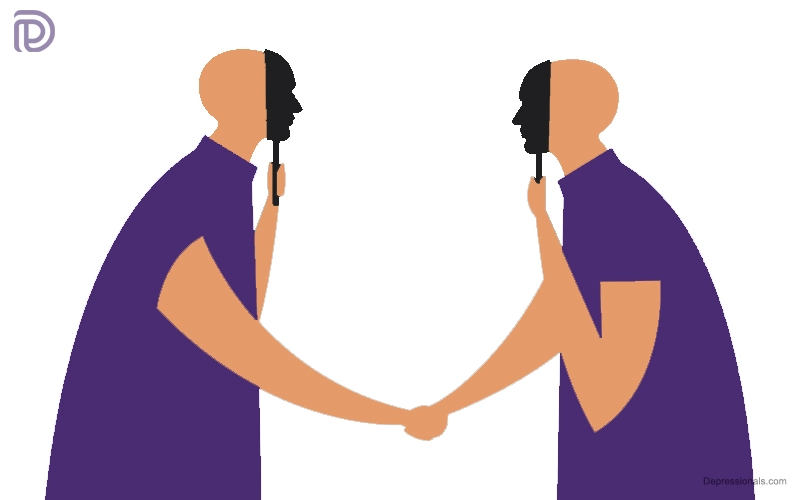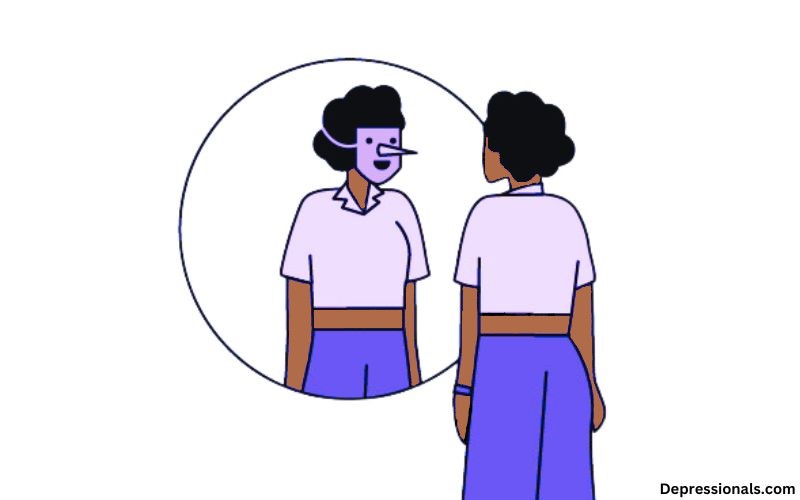Emotional disorders are rare, chronic and recurrent psychiatric disorders associated with significant loss of functionality in relationships, productivity and quality of life. It is increasingly recognized that these disorders are neurodevelopmental in nature since they often begin during childhood or adolescence and have detrimental effects throughout life. Physiological, cognition, behavior, and affective problems may be exacerbated by disruptions to neuroanatomy and neural circuitry.
Situations can impact someone’s mood, so it’s normal for it to change. An individual must display symptoms for at least a few weeks in order to be diagnosed with an emotional disorder. Your behavior can change if you have an emotional disorder, and managing routine activities, such as work or school, can be difficult.
Depression and bipolar disorder are the most prevalent emotional disorders. In this article, we will discuss some of the subtypes of these disorders.
Depression (major or clinical depression): The most common mental disorder is depression. It is normal to feel grief or sadness following a traumatic life event or crisis, such as losing a spouse, losing a job, or having a serious illness. Depression would be classified as clinical or major by a physician if it persists even after stressful events or if no apparent cause is apparent. An individual with clinical depression must experience symptoms for at least two weeks prior to being diagnosed.
There are many types of depression. Each type has its own symptoms.
- Postpartum depression (peripartum depression): Postpartum depression occurs after childbirth or during pregnancy.
- Persistent depressive disorder (dysthymia): An individual with this form of depression may suffer from it for at least two years. Occasionally, the severity of symptoms may diminish during this period.
- Seasonal affective disorder (SAD): The severity of SAD varies depending on the season of the year. It usually begins in late autumn or early winter and continues through the spring and summer months. It is also possible for SAD episodes to begin in the late spring or summer. Major depression may present similar symptoms as winter seasonal affective disorder. The symptoms typically diminish or go away in spring and summer.
- Psychotic depression: It occurs when severe depression is accompanied by psychotic episodes such as hallucinations or delusions (saying or seeing things other people don’t see). This type of attack can be distressing and upsetting.
- Depression caused by medical conditions, medications, or substance abuse can also be distressing and frustrating.
Bipolar disorder (manic-depressive disorder): The mood swings associated with bipolar disorder range from periods of depression to periods of mania. The symptoms of clinical depression may be experienced when someone has a low mood. Manic episodes and depressive episodes may alternate. A manic episode can include feelings of elation, irritability and increased activity.
Bipolar disorder can be categorized into four different types:
- Bipolar I: It is the most serious type of bipolar disorder. An episode of manic behavior lasts at least seven days. Depressive episodes can also last two weeks or more. Symptoms of depression and mania can appear together.
- Bipolar II disorder: This disorder is associated with depression cycles like bipolar I. Hypomania is a milder form of mania that can accompany this illness. Hypomania doesn’t last as long or cause as much disruption as mania. Bipolar II disorder doesn’t require hospitalization and most people can take care of their daily responsibilities.
- Cyclothymia disorder (cyclothymia): Bipolar disorder of this type is sometimes classified as a mild form. Those with cyclothymia experience regular mood swings over an extended period of time, ranging from mild to moderate “highs” to mild to moderate “lows.”. There is also the possibility that mood changes can happen abruptly and at any time. The mood is only normal for short periods of time. It is necessary to have cyclothymic symptoms for at least two years for an adult to be diagnosed. If symptoms persist for at least one year, they are considered persistent for children and adolescents.
- “Other” or “unspecified” bipolar disorder: People with this type of bipolar disorder have abnormal mood changes but their symptoms are not consistent with those of the other types.
Other emotional disorders:
- Premenstrual dysphoric disorder: Emotional disorders such as this usually occur prior to menstruation and disappear following the start of the menstrual cycle. Hormonal changes related to the menstrual cycle are believed to cause this disorder. Stress can cause anger, irritability, tension, a decrease in usual interest in activities, and trouble sleeping.
- Intermittent explosive disorder: One of the lesser-known emotional disorders, unwarranted anger is a symptom. Individuals with intermittent explosive disorder display behavior out of proportion to the circumstance. The episode is often called “flying into a rage for no reason.”
Read: What is Consciousness
What causes emotional disorders?
Different types of disorders may be caused by different factors. A large number of factors have been linked to emotional disorders, including genetics, biology and the environment.
These include:
- Family history
- Emotional disorder history
- Significant life events or trauma in case of depression
- Illness or medication use. Among the diseases linked to depression are cancer, diabetes, Parkinson’s disease and cardiovascular disease
- Bipolar illness affects the brain’s structure and function
What are the symptoms of common emotional disorders?
The symptoms of emotional disorders vary based on their severity.
Major depressive disorder may include:
- Having a sad mood every day or almost every day
- Feeling tired all the time
- Hopeless or worthless
- Overeating or losing appetite
- Losing or gaining weight
- No longer enjoying activities that used to be enjoyable
- Not sleeping enough or too much
- Thinking about suicide or death often
- Inability to concentrate
Mania may accompany depression in bipolar disorder. Some of the symptoms of hypomania and manic episodes are:
- Extreme energy or elation
- Anxiety or feeling on edge
- Excessive talking or moving
- Irritability, agitation or restlessness
- Excessive spending or reckless driving are risky behaviors
- Excessive activity or trying to accomplish too many things at once is unusual
- Racing thoughts
- Insomnia or difficulty sleeping
Read: Subconscious Mind
How are emotional disorders diagnosed?
An exam may be conducted by your doctor in order to rule out physiological circumstances, such as a thyroid problem, an illness, or a vitamin deficiency. If you or a family member have been diagnosed with an emotional disorder, your doctor will ask about your medical history and the medications you’re taking. Psychologists and psychiatrists conduct interviews or conduct surveys, asking questions regarding symptoms, sleeping and eating habits, and other behaviors.
What are the treatments for emotional disorders?
The course of treatment depends on the specific underlying cause of the disorder and the symptoms it causes. Psychotherapy (also referred to as “talk therapy”) is usually used in conjunction with medication. Therapists can include psychologists, psychiatrists and other health professionals.
Medication for depression or bipolar disorder
Antidepressants
Depressive episodes in bipolar disorder may be treated with a variety of medications. Inhibitors of selective serotonin reuptake (SSRIs) are among the most widely used drugs for depression. Some of these medications include citalopram (Celexa), escitalopram (Lexapro), sertraline (Zoloft), fluoxetine (Prozac) and paroxetine (Paxil).
These drugs also act similarly to SSRIs and are commonly prescribed. Examples include duloxetine (Cymbalta) and venlafaxine (Effexor). Depression and seasonal affective disorder can be treated with bupropion (Wellbutrin). These medications work differently from SSRIs and SNRIs. An older type of antidepressant is tricyclic antidepressant, while monoamine oxidase inhibitors and tetracyclic depression are older types.
It may be that some antidepressants work better for certain individuals than others, regardless of their type. No matter how much better you feel, it is important to keep taking your antidepressant as prescribed. Antidepressants usually work after taking them for four to six weeks.
Read: Short-Term Memory Loss
Mood stabilizers
When a person has bipolar disorder or another disorder, these medications help to regulate their mood swings. Their effect is to reduce unbalanced brain activity. It is also possible to prescribe mood stabilizers with antidepressants in some cases. Lithium and anticonvulsants, like valproic acid (Valproic), lamotrigine (Lamictal), carbamazepine (Tegretol), and oxcarbazepine (Trileptal), are commonly used mood stabilizers.
Antipsychotics
An atypical antipsychotic drug, such as aripiprazole (Abilify), may be prescribed to patients with bipolar disorder who experience mania or mixed episodes. It is possible to treat depression with atypical antipsychotics if antidepressants alone are not sufficient to control symptoms.
Psychotherapy (talk therapy)
Different types of psychotherapy or counseling sessions may benefit patients with depression or other emotional disorders. Some of these therapies include:
- Cognitive-behavioral therapy
- Interpersonal therapy
- Problem-solving therapy
Brain stimulation therapies
Those who receive brain stimulation therapy are believed to be able to change certain chemicals in the brain that may contribute to depression and bipolar symptoms. These treatments include:
Electroconvulsive therapy (ECT)
ECT has long been used in cases when medication or psychotherapy haven’t helped treat severe depression or bipolar disorder. ECT patients are given a muscle relaxant and general anesthesia before they undergo the procedure. Certain electrodes are inserted around a patient’s scalp or forehead. The brain is induced to seizure with the use of an electric current. Patients awaken between five and ten minutes later. Patients can undergo ECT as an outpatient procedure. Over a period of two weeks or more, it is usually necessary to visit two or three times per week. There will generally be six to twelve visits.
Read: Dystonia Disorder
Repetitive Transcranial Magnetic Stimulation (rTMS)
An electromagnetic coil is used to apply short pulses to specific nerve cells in the brain during this non-invasive procedure. Pulses are sent through the skull, while a magnet is placed against the forehead. When a patient does not respond to at least one antidepressant, the procedure is used to treat major depression.
Treatments for seasonal depression
Treatment for seasonal affective disorder includes prescription antidepressants, such as SSRIs and bupropion and psychotherapy. In addition, vitamin D supplementation and light therapy may also be helpful.
Light therapy
Many people have long used this technique to treat SAD. During the fall and winter, it utilizes bright artificial light to supplement natural sunlight. Lightboxes that use cool white fluorescent bulbs may be used by patients in the winter. About 20 to 60 minutes of exposure is required every morning. There is a light that is 20 times brighter than typical indoor lighting.
Read: Stereotypic Movement Disorder
What’s the outlook for people with emotional disorders?
It may be necessary for patients to receive long-term or lifetime therapy for mental disorders like depression and bipolar disorder, as they can recur or be ongoing. Patients are encouraged to take prescribed medications as directed. You may not notice a change in your symptoms for two to six weeks after starting your medications. No matter how much better you feel, don’t stop taking your medication.
Speak with your doctor or other health care professional if you have concerns about changing or stopping the medication. If you are taking a medication and are experiencing symptoms such as headaches, nausea, vomiting, or diarrhea, discuss it with your doctor to see if you should try a different medication or have the dosage adjusted.
The use of psychotherapy in conjunction with medication or brain stimulation therapy is often found to be an effective treatment approach. Psychotherapy alone can be effective for treating minor forms of depression. A brain stimulation therapy is typically used when other treatments have not been successful, when severe symptoms exist, or when a drug therapy can’t be tolerated. The treatment for every emotional disorder patient is different, so every therapy may have a role to play.
Feeling suicidal or contemplating self-harm or harming others? Seek help right away.






It’s appropriate time to make some plans for the future and it’s time to be happy. I have learn this submit and if I may I wish to counsel you few interesting things or suggestions. Perhaps you could write next articles regarding this article. I wish to read even more issues about it!
It is best to participate in a contest for among the finest blogs on the web. I’ll recommend this site!
Thanks for your post.
You are really a good webmaster. The site loading speed is amazing. It seems that you’re doing any unique trick. Furthermore, The contents are masterpiece. you’ve done a magnificent job on this topic!
I’ve learned some important things by means of your post. I might also like to state that there is a situation that you will make application for a loan and do not need a co-signer such as a Federal government Student Aid Loan. However, if you are getting financing through a standard banker then you need to be able to have a cosigner ready to assist you to. The lenders are going to base their own decision on the few aspects but the largest will be your credit standing. There are some financial institutions that will likewise look at your work history and choose based on that but in most cases it will depend on your ranking.
I think other web-site proprietors should take this web site as an model, very clean and great user genial style and design, let alone the content. You are an expert in this topic!
This is the proper blog for anyone who desires to search out out about this topic. You notice so much its virtually arduous to argue with you (not that I really would need匟aHa). You positively put a new spin on a topic thats been written about for years. Great stuff, simply great!
Well I definitely liked studying it. This post offered by you is very effective for good planning.
Thanks for the tips you are revealing on this weblog. Another thing I’d prefer to say is that getting hold of duplicates of your credit profile in order to check out accuracy of each and every detail is one first step you have to accomplish in fixing credit. You are looking to clear your credit profile from detrimental details flaws that screw up your credit score.
Does your blog have a contact page? I’m having trouble locating it but, I’d like to shoot you an email. I’ve got some creative ideas for your blog you might be interested in hearing. Either way, great site and I look forward to seeing it expand over time.
Thanks for sharing excellent informations. Your site is so cool. I’m impressed by the details that you抳e on this web site. It reveals how nicely you understand this subject. Bookmarked this website page, will come back for extra articles. You, my pal, ROCK! I found just the information I already searched all over the place and simply could not come across. What an ideal web site.
I have read several just right stuff here. Certainly value bookmarking for revisiting. I surprise how so much attempt you set to make any such great informative web site.
One thing I’d really like to reply to is that fat burning plan fast can be achieved by the perfect diet and exercise. People’s size not merely affects appearance, but also the complete quality of life. Self-esteem, depressive disorders, health risks, and physical abilities are affected in an increase in weight. It is possible to make everything right and still gain. Should this happen, a condition may be the root cause. While excessive food rather than enough exercising are usually responsible, common health concerns and widespread prescriptions can easily greatly increase size. Thanks alot : ) for your post here.
Thanks for your write-up on the vacation industry. We would also like to add that if you’re a senior thinking of traveling, it truly is absolutely essential that you buy travel cover for golden-agers. When traveling, seniors are at biggest risk of experiencing a medical emergency. Obtaining the right insurance coverage package for the age group can safeguard your health and provide peace of mind.
wonderful put up, very informative. I ponder why the other experts of this sector don’t realize this. You should proceed your writing. I’m sure, you’ve a huge readers’ base already!
Fantastic beat ! I wish to apprentice even as you amend your site, how can i subscribe for a blog site? The account helped me a appropriate deal. I were tiny bit familiar of this your broadcast offered vivid clear idea
This actually answered my problem, thanks!
Thanks for the suggestions you have contributed here.
This blog is definitely rather handy since I’m at the moment creating an internet floral website – although I am only starting out therefore it’s really fairly small, nothing like this site. Can link to a few of the posts here as they are quite. Thanks much. Zoey Olsen